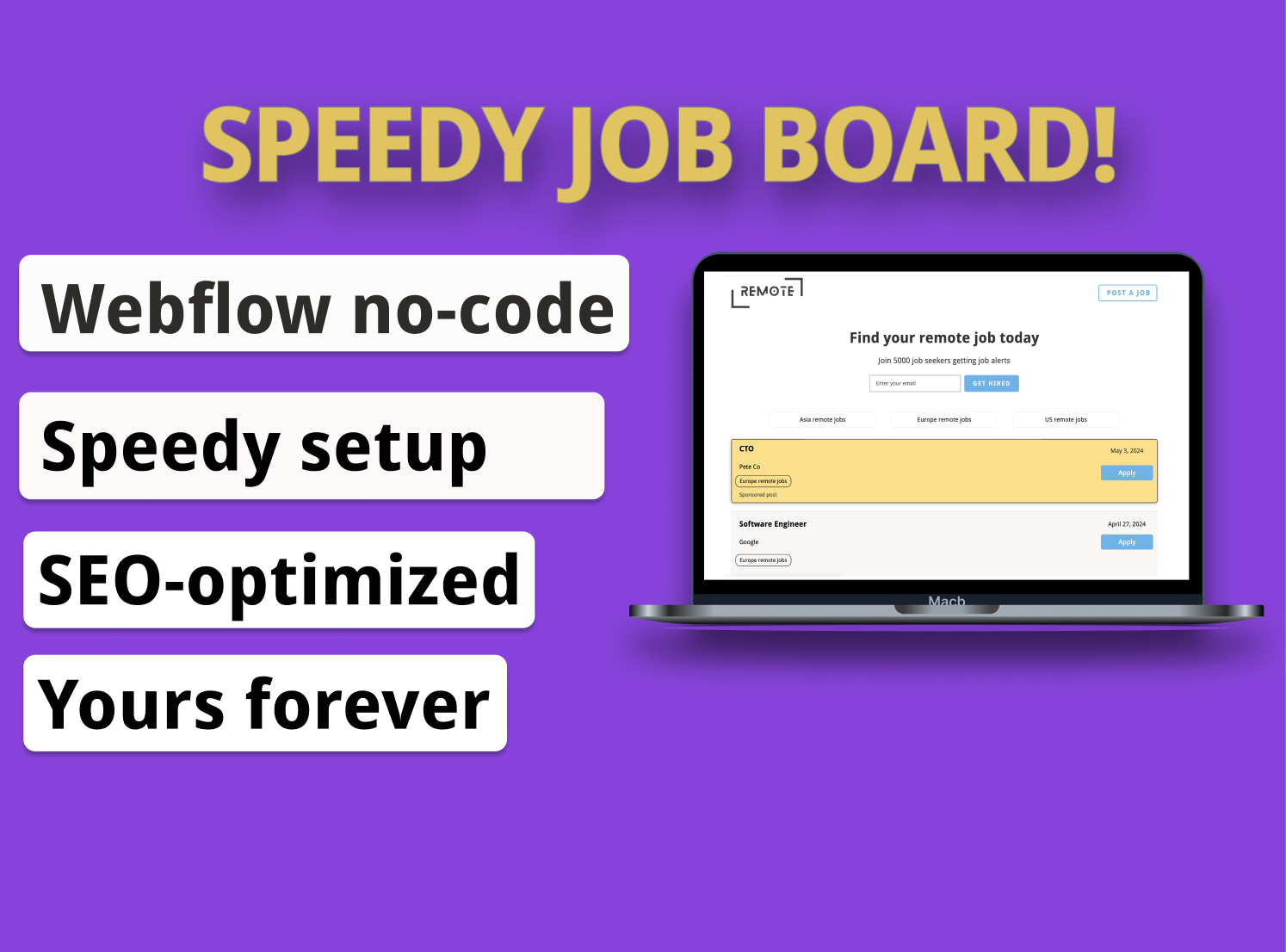Job board guide - how to make, grow and monetize them

Niche job boards can be a great way to create a profitable business that doesn't require a lot of time input. Many founders make six figures and upwards by running a simple job board website. I've ran job boards that took a handful of hours per week to operate so you can just one as a side-hustle alongside your day-job.
Job boards don't require the usual step of adding lots of features to catch up with the competition like SaaS does. I've seen niche job boards that don't look any different from they did 5 years ago. You can make a business based on solving a problem that people will always face: hiring people and finding a job. In this guide I'll go over how to make, grow and monetize a job board without writing a line of code.
What is a job board?
A job board is simply a website with a list of job vacancies that job seekers can apply for. Some famous ones you are probably familar with are Indeed, Monster Jobs and Zip Recruiter.
What features does a job board need?
The features you need if you want to make a job board are very simple - you need to show a list of jobs and allow the website visitor to see more information and apply to the job when they click on the listing.
Here's an example from the demo of my Speedy Job Board template
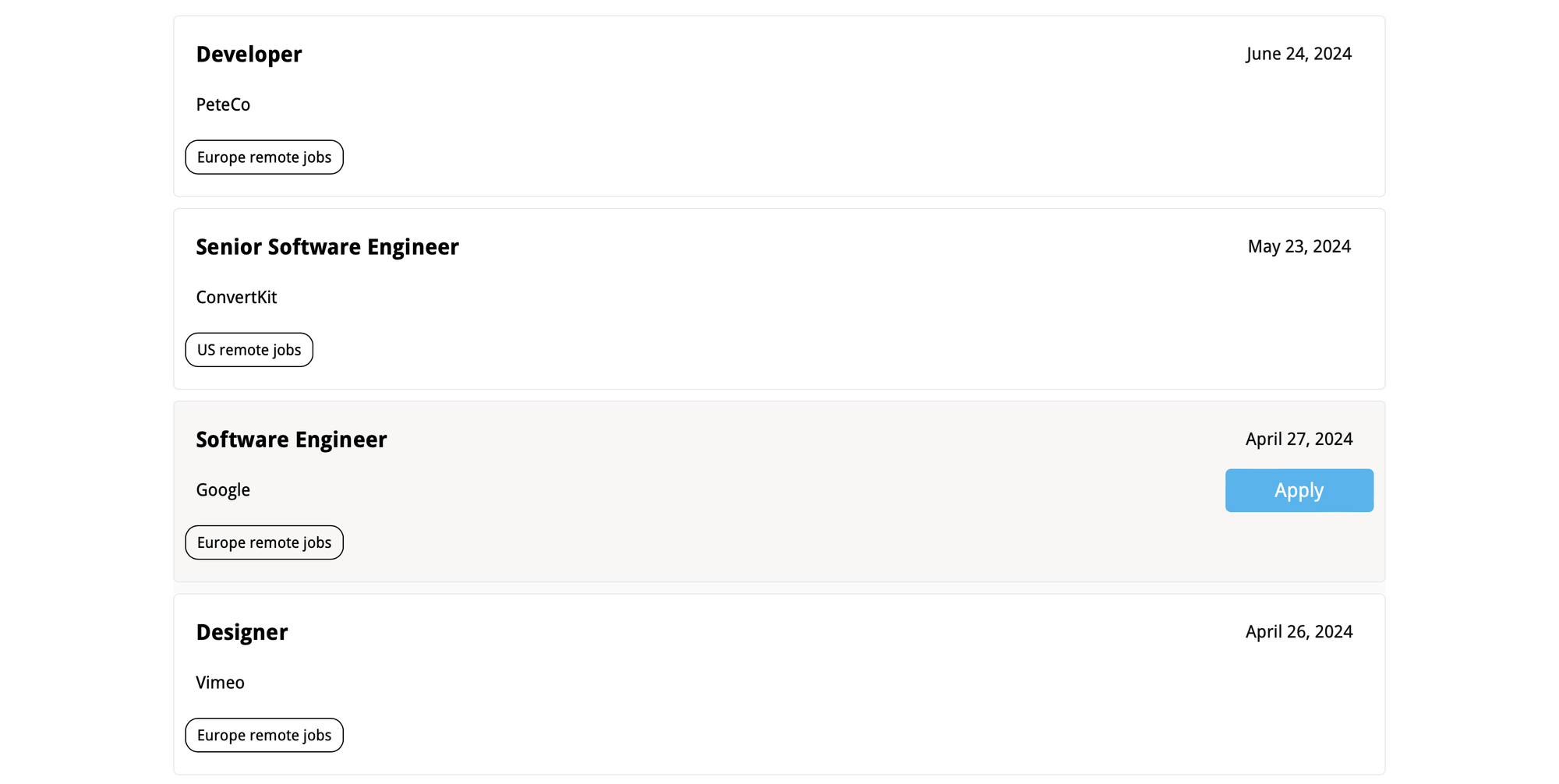
Ideally, you also have some filters so that people can choose between different jobs on your website. It's not very helpful if someone has to scroll through thousands of jobs one-by-one!
You also need a Hiring page where companies can go and fill out their job information and buy an advert on your website. With my template, I've used the automation tool Zapier to connect form submissions and send them to my Webflow database so you don't need to do any coding.
That's it really! You don't need to add a lot of other features or pages. You could add a blog to attract more SEO traffic but that's it really.
Get the templateNiche job board examples
There's a lot of opportunity in building a niche job board that servcs a particular segment of the population based on their skills, their seniority or where they live. Indeed is great for showing all jobs everywhere but most of us are looking for a very particular type of job.
For instance, my friend Phil runs a job board for people looking for a 4 day week job. This is great if you want to have a day off each week for family commitments, working on a side project or just resting up!
Peter Askew runs Ranch Work, a job board for people who want to work on ranches and makes $10k a month from job adverts. It's actually one of my favourite niche job boards as it's so out-there! Most people who make job boards are tech founders so they naturally gravitate towards building job boards for tech audiences. However, there are lots of opportunities out there for building non-tech job boards!
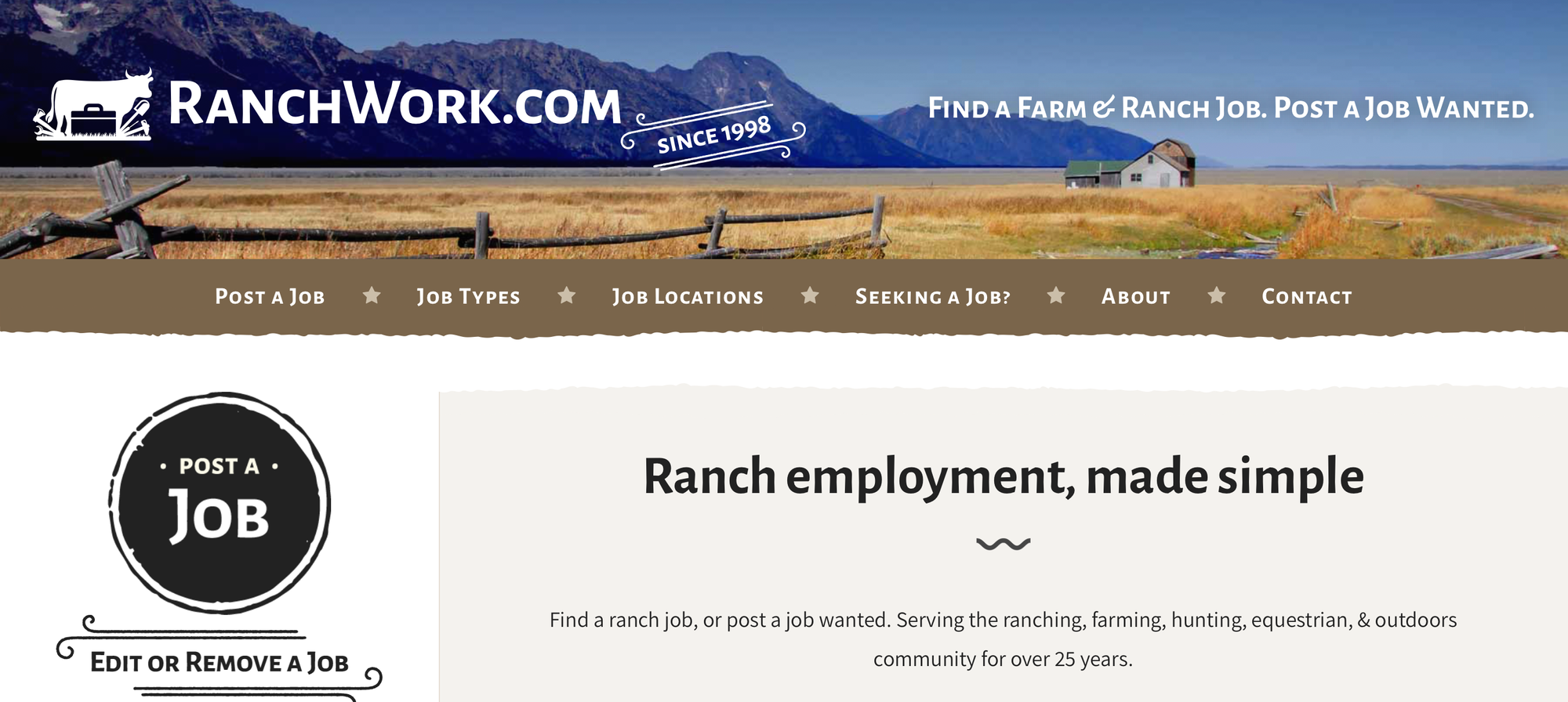
The RE Jobs website just shows jobs in the growing renewable energy sector. Lots of people are concerned about climate change so this is a great idea for a job board to appeal to environmentally-minded people.

Diversity Tech is a niche job board aimed at improving diversity levels in tech. It matches companies with underrepresented developers.

Why you should start a job board
• Job boards are very cheap to operate.
Once you get a job board up and running, there's not a lot of expenses.
The Speedy Job Board template: $139 one-time payment
Webflow site plan (paid upfront for a year): $276
A domain: $10
Total: $425
So your job board only costs $425 to start! If you sell two job board postings, which usually cost $299, you are in profit immediately! And if you use my Speedy Job Board template (which you only pay for once), it would only cost you $286 after the first year. Compare that to most businesses and you can see how profitable a job board can be.
Get the template• Job boards don't take much time
It's easy to run a job board (especially if you start with my template!). Once you have a website published it's just a case of updating the content. This can be done in a few hours per week. In the past I've spent 1-2 hours per week on updating job boards. The great thing about a well-designed job board is that it can hoover up keywords that people type into Google. So if you have an SEO-optimized job board template like Speedy Job Board you can generate a lot of traffic without a ton of work.
• Job boards are easy to run
Andrew Wilkinson of Tiny Capital owns the We Work Remotely job board. Originally created by Basecamp, he bought it from them and watched revenue boom during the Covid shutdown as companies flocked to hire remote workers. Andrew described his job board as "the easiest business I own" on the My First Million podcast.
How do job boards make money?
• Job listings
The most obvious and lucrative way to make money with a job board is to charge companies to post ads on your website. For instance, We Work Remotely charges $299 per job advert. So if you can sell a job advert at $299 each day of the month, that's $8,970. Many niche job boards earn 6-7 figures in annual revenue from companies buying job adverts.
You can also charge companies more if you pin their job opening to the top of the website. This functionality is provided within the Speedy Job Board template and it's an excellent way to give more value to companies using your website.
With the Speedy Job Board template you can also take payment with Stripe. Users can fill out the job info in a Tally form which has a Stripe payment field. We then use Zapier to send this information to your Webflow database. All of this is clearly explained in the Speedy Job Board video docs.
Peter Askew's Ranch Work job board offers a freemium option. So there's an option to post a limited number of free job ads but these are less attractive as they are only online for 3 days. The more you pay, the longer your job is advertised for. Freemium can be a good way to monetize your job board as it minimizes the risk for advertisers. If they get a good result from their free posting, they will be much more likely to pay to advertize again. Therefore, it's a good way to earn trust from companies who may be wary of posting on your new job board.
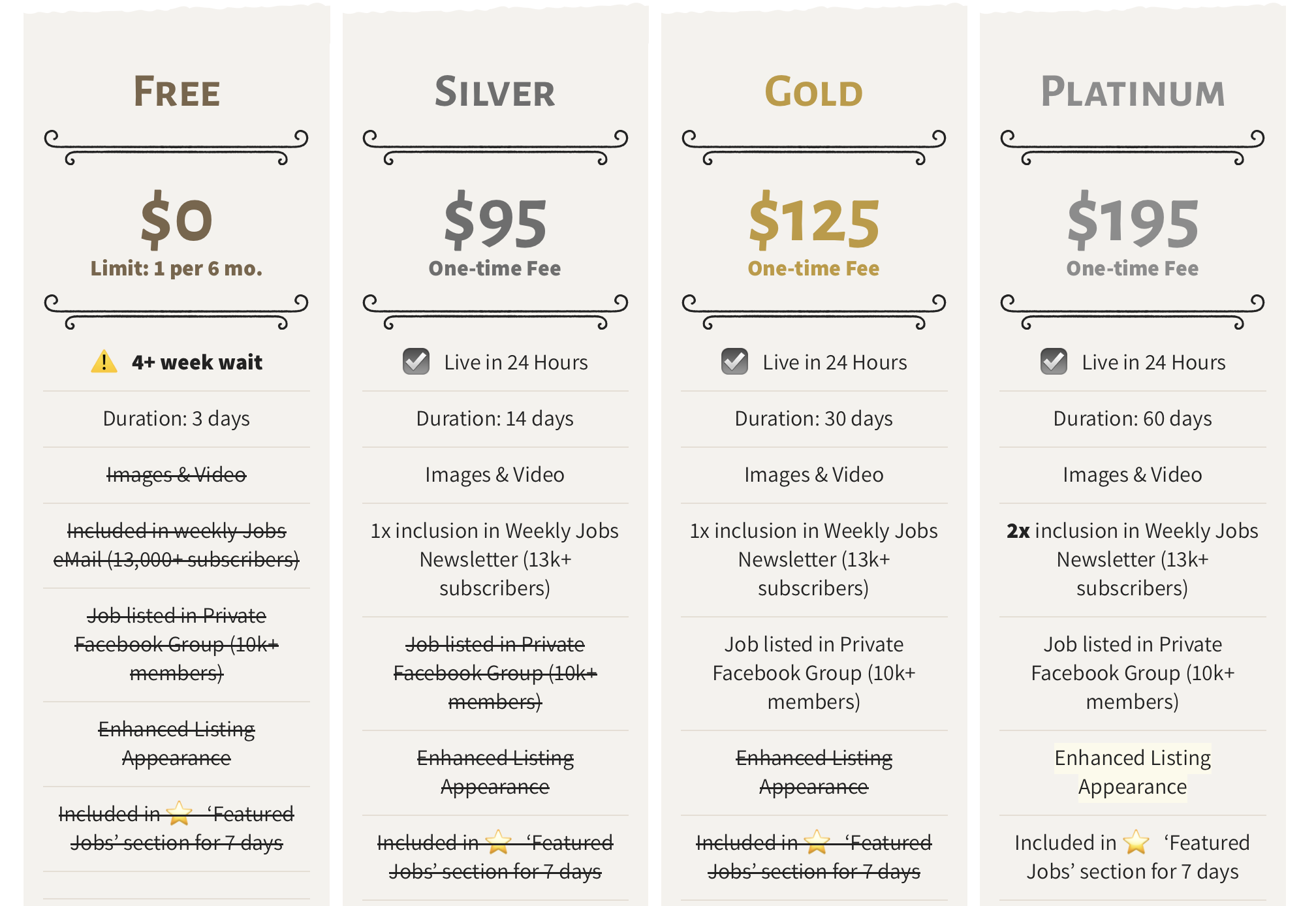
• Newsletter adverts
You should definitely have an email newsletter if you run a job board. Luckily, the Speedy Job Board template comes complete with an email form at the top of the website, with tips on how to increase email subscribers.
If you want to make more revenue, you can monetize your job board with newsletter adverts. I know job board owners who make the bulk of their revenue this way. Let's say you have a job board for designers. Well, obviously a lot of design companies are going to want to reach these people and promote their software there. So you can match the two and sell ads to design tools. I've sold a lot of newsletter ads over the years in my job board newsletter for entry level developers. Many of these ads were for software companies that wanted to reach my developer audience.
You can also get money for promoting other newsletters through programmes like SparkLoop, ConvertKit and Beehiiv. I know one job board owner who made $4,000 in one month just from recommending other newsletters to his email readers.
• Affiliates
Another way I see job board owners make money is from affiliate links. You can post these on your website or in your newsletter. I know a job board operator who makes extra cash by partnering with and recommending resumé writing tools. So he gets paid whenever one of his susbcribers buys their software through an affiliate link. You can also partner with companies that will help upskill your audience. For instance, I've monetized a jobs board newsletter before through affiliate links to coding courses.
• Charging job seekers
This isn't to everyone's tastes but some job board owners charge job seekers to access their full list of jobs. This approach has become more prevalent since job cuts in the tech sector began post-Covid. One job board that takes this approach is Remote Rocketship, which charges job seekers $18 a month or $60 a year to see the full database of jobs. You could do this with the Speedy Job Board template by sending a freemium newsletter: email platforms like ConvertKit and Beehiiv allow you to put content behind paywalls.
How much to run a job board?
The cost of running a job board can vary widely. Of course, the cheapest option is to build it from scratch but this will take most people months and required a lot of programming skills. You could hire a developer to make one for you. A friend of mine paid around $4,000 for a job board built with Django.
There are a few options for making a job board without building it from scratch:
Niceboard: $1,788 to $4788 per year
Jboard:$1188 to $4068 per year
Speedy Job Board + Webflow costs + website domain: $425 in the first year
So you can see my job board template is a much more affordable option 😀
Get the templateHow to grow a job board
• SEO
SEO is extremely important for job boards. I'd recommend doing some basic keyword search on a tool like Ahrefs and find keywords that people are searching for and that is relatively easy to rank for.
The easiest way to grow a job board is to set up a bunch of category filters for different types of job searches. I was pretty amazed at how effective this works when I've tried it on my own job boards in the past.
For instance, imagine you have a job board for remote jobs. Add a category filter for each of the following:
• US remote jobs
• Europe remote jobs
• Asia remote jobs
• Africa remote jobs
• Oceania remote jobs
• South American remote jobs
Handily, I have this set up for you in my job board template. It's very simple to add and delete new categories of your choice. This way, you'll get traffic from people all around the world searching for these terms. It's virtually impossible for a new site to get on the front page of Google for the keyword "remote jobs". If you try and rank for "remote jobs in Asia" you are definitely in with a chance.
Here's the first page of Google for this term:
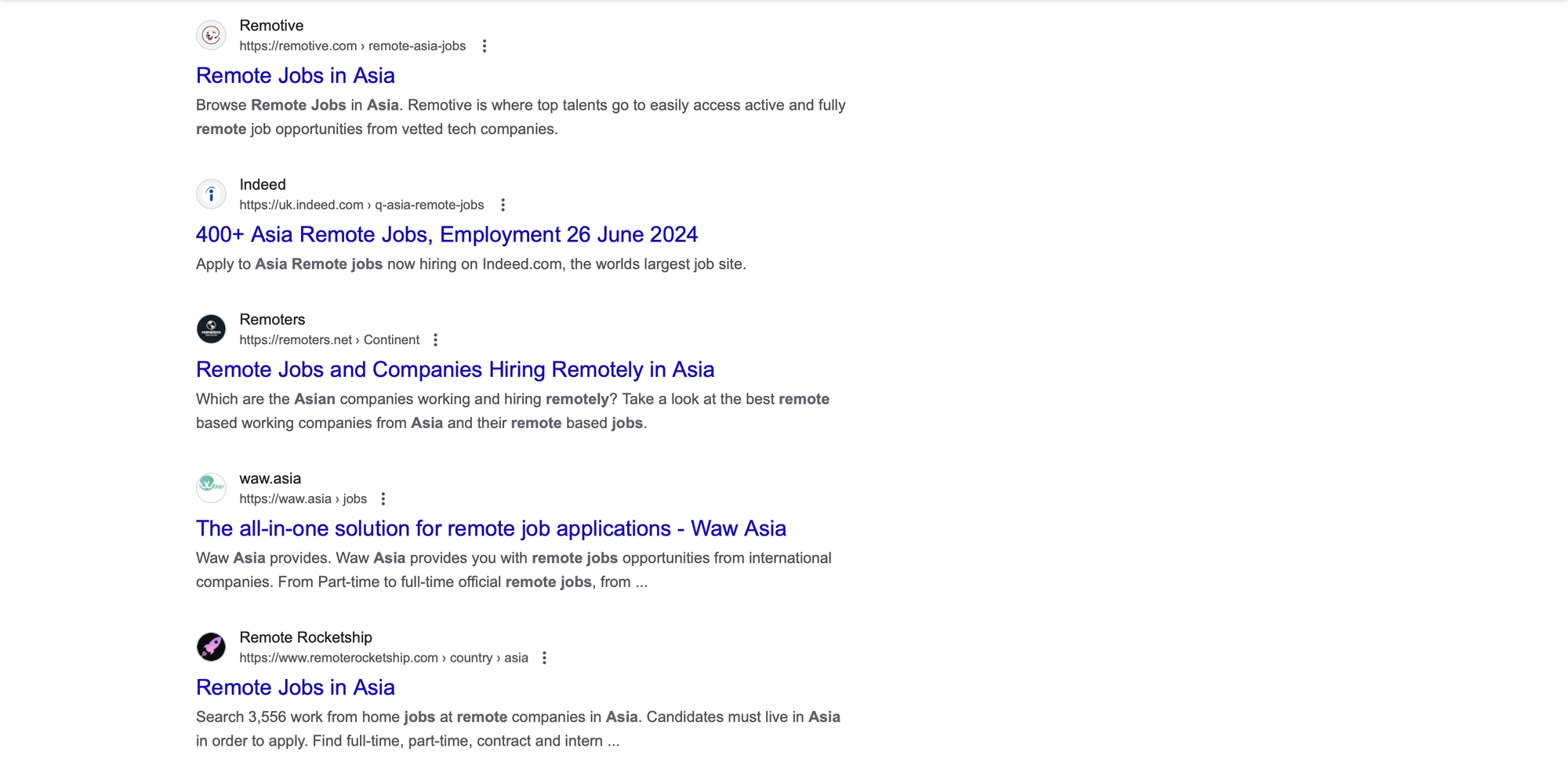
Notice how Remotive, a bootstrapped job board, beats the HUGE jobs website Indeed to 1st place! Also, there is Remote Rocketship in 5th place, which is another job board created by an indie hacker.
Aside from doing good keyword research with a tool like Ahrefs and setting up category filters, I recommend posting your job board to directories like Product Hunt and Job Board Search, a dedicated directory for job sites.
You'll also want to check that your job board loads quickly, is accessible to all readers (e.g. blind people using visual readers), looks great on all mobile devices and follows best SEO practises. You can check how your website performs with this free tool from Google. You want green scores from 90-100.
Here's how the Speedy Job Board performs:
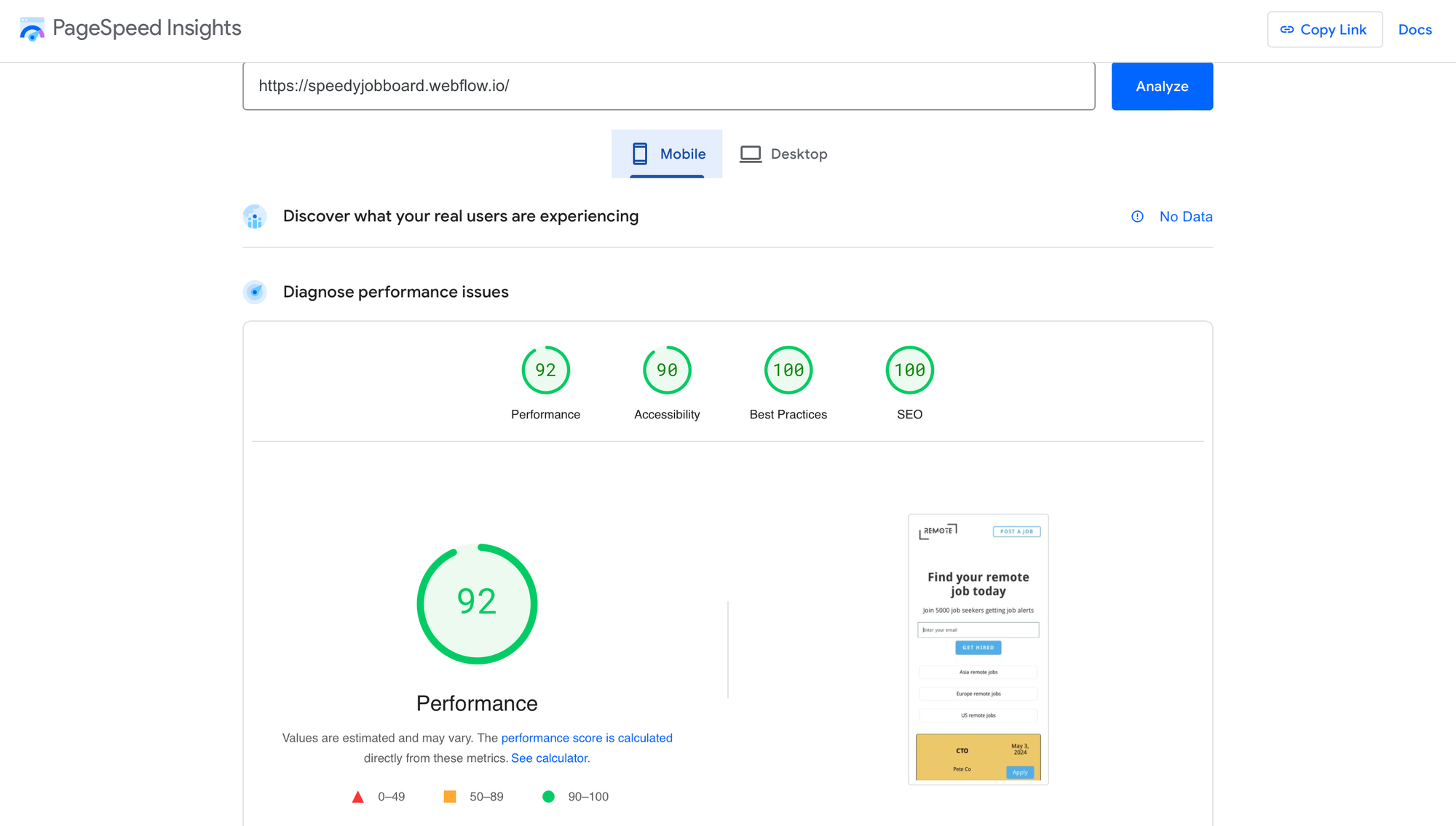
• Social media
Apart from SEO, another marketing channel to try is social media. I'd recommend posting job opportunities to Twitter, LinkedIn, Facebook, Telegram and even TikTok. People are always grateful for tips on where to find jobs so these posts tend to do very well.
• Newsletter
Last but not least, you need to have an newsletter on your job board. This way you can collect peoples' emails and keep reminding them when you add jobs to your website. This will bring reliable traffic to your job board. I've found newsletters are a great way to grow a job site because job seekers are always motivated to sign up to email lists if there is the chance of a job. It's not like a SaaS where people only use one solution. If you are job hunting you'll sign up for as many job alerts until you get hired or change position.
Start with a job board template
I've made your life easier for you by building a Webflow job board template. It means you can launch a job board in a couple of hours instead of a couple of months if you build it yourself. It's also significantly cheaper than job board software like JBoard and Niceboard. And because it's built in Webflow, you can customize it as much as you like.
Grab it now and start building your job board idea!
